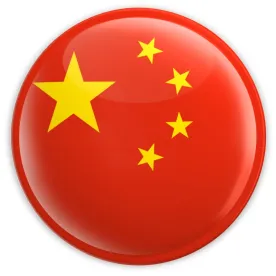This is the second guest post in a 4-part series regarding Chinese well-known trademarks by Yan Zhang, Feifei Bian & Austin Chang of Beijing East IP. The first part is available here.
Previously, we shared our insights on how to secure well-known mark recognitions in China and its benefits. In the next few articles, we will be sharing cases with analysis on how the courts apply well-known mark recognitions to various facts.
1. “Cisco in Chinese” v. “SIKE and SI KE in Chinese”
Foshan City Shunde District Lunjiao Junze Electrical Appliance Factory (“Lunjiao”) applied for the Disputed Mark No. 13618667 on November 27, 2013 and was approved for registration on November 28, 2016 in Class 11 for “electric cooker; electric kettle; electric water heater; electric yogurt maker; electric pressure cooker (pressure cooker); gas stove; gas water heater.” Cisco applied for the Cited Mark No. 3999024 on April 6, 2004 and was approved for registration on September 7, 2006 in Class 9 for “network communication equipment; telephone; etc.”
| Disputed Mark | Cited Mark |
Cisco filed an invalidation request on February 27, 2017 before the CNIPA. The CNIPA affirmed the Disputed Mark’s validity. Cisco appealed the decision to the Beijing IP Court. On May 24, 2019, the Beijing IP Court reversed the CNIPA’s decision and ordered the CNIPA to re-render its decision based on the Beijing IP Court’s decision.
In its decision, the Beijing IP Court found that the evidence submitted by Cisco is sufficient to prove the well-known mark status of “CISCO in Chinese (思科)” on “network communication equipment” in Class 9 prior to the application date of the Disputed Mark. Further, the Beijing IP Court found that the Disputed Mark’s specific composition combining “SIKE” and “SI KE in Chinese (思科)” copied and imitated Cisco’s well-known mark. The Disputed Mark’s approved goods for “electric cooker; electric water heater; etc.” were common household consumer goods that were likely to attract relevant consumers who were attracted to the Cited Mark’s approved goods. Meanwhile, Lunjiao failed to provide reasonable explanations regarding the idea that shaped the Disputed Mark’s creation. Cisco’s evidence also showed that in addition to the Disputed Mark, Lunjiao applied for six other trademarks, one identical to the Disputed Mark and five “3M” marks, which inevitably suggested the likelihood of Lunjiao’s bad faith intention in free riding other’s goodwill. Similarly, the Disputed Mark’s relevant consumers were likely to associate Cisco’s well-known mark “Cisco in Chinese (思科)” upon seeing the identical Chinese characters used in the Disputed Mark. The Disputed Mark may also dilute the well-established corresponding relationship between Cisco and its well-known mark “Cisco in Chinese (思科),” impaire the distinctiveness of Cisco’s well-known mark, and damage Cisco’s well-known trademark rights.
2. “McFlurry in Chinese” v. “MAI XUAN FENG in Chinese”
China Top Foods Co., Limited (“Top Foods”) applied for the Disputed Mark No. 12049136 on January 15, 2013 and was approved for registration on November 28, 2015 in Class 35 for “advertisement promotion; advertising design; commercial management of franchising; marketing for others; personnel management consulting; business enterprise migration; compiling information into computer databases; accounting; vending machine rental; seeking sponsorship.” McDonald’s applied for the Cited Mark 1 No. 1646857 in Class 29 for “meat products; pork products” and Cited Mark 2 No. 8666342 in Class 30 for “ice cream, etc.” prior to the Disputed Mark’s application date.
| Disputed Mark | Cited Mark 1 | Cited Mark 2 |
McDonald’s filed an invalidation request on August 19, 2016 before the CNIPA. The CNIPA affirmed the Disputed Mark’s validity. McDonald’s appealed the decision to the Beijing IP Court. On August 1, 2019 the Beijing IP Court reversed the CNIPA’s decision and ordered the CNIPA to re-render its decision based on the Beijing IP Court’s decision.
In its decision, the Beijing IP Court found that the Cited Mark 1 and Cited Mark 2 (“Cited Marks”) could be recognized as well-known marks based on the evidence McDonald’s submitted. The evidence showed that prior to the Disputed Mark’s application date, McDonald’s carried out long-term, extensive, and numerous promotions for the Cited Marks “McFlurry in Chinese (麦旋风)” on milk products, ice cream, etc. in mainland China. The Chinese characters used in the Disputed Mark were identical to the Cited Mark 2. The only undiscernible difference between the Disputed Mark and the Cited Mark 1 was that the Disputed Mark used traditional Chinese and the Cited Mark 1 used simplified Chinese. Based on foregoing reasons, the Disputed Mark copied the Cited Marks. Moreover, because the Cited Marks had strong distinctiveness with high fame, even if the approved services “advertisement promotion, etc.” under the Disputed Mark were unrelated to the approved goods “milk” and “ice cream” under the Cited Marks, the relevant consumer would inevitably associate McDonald’s and its well-known marks upon seeing the Disputed Mark. Such association would damage the well-established correspondence between McDonald’s and the Cited Marks, decrease the distinctiveness of McDonald’s well-known mark, and damage McDonald’s interests.
3. Beijing East IP analysis and comments
The standard applied for well-known mark protection can be found in Article 9(2) of the Interpretation of the Supreme People’s Court on Several Issues Concerning the Application of Law in the Trial of Civil Dispute Cases Involving Well-Known Trademark Protection (“SPC Interpretation”) which states that associations that are capable of confusing the relevant public to believe that the accused trademark has a considerable degree of association with a well-known mark, thereby weakening the distinctiveness of that well-known mark, derogating the market reputation of that well-known mark, or improperly using the market reputation of that well-known mark. This standard shall be consistently applied across administrative and civil trademark litigations. The SPC Interpretation established that, instead of likelihood of confusion, courts shall focus on impairing a well-known mark’s distinctiveness, harming a well-known mark’s reputation, or improperly using a well-known mark’s market reputation when finding damage for a well-known mark. Such approach is aimed at protecting a well-known mark’s distinctiveness from impairment and preventing harm from the one-to-one association established between a well-known mark and its particular goods and services.
In judicial practice, when determining the scope of protection for a well-known mark, courts should comprehensively consider the well-known mark’s distinctiveness, fame, similarity between the marks, actual use of the approved goods, degree of overlapped relevant consumers and their attentions, and the subjective state of mind of the disputed mark’s applicant.
The Cisco and the McFlurry cases reflect how well-known mark protection extends the scope of protection in administrative trademark litigations to not only eliminate potential likelihood of confusion but also prevent well-known mark from dilution.
In this Cisco case, the disputed mark’s approved goods “electric stove; electric water heater, etc.” are common consumer goods that face a wide range of relevant public, which overlaps with the targeted consumer of Cisco’s approved goods “network communication equipment.” Considering Cisco’s cited mark “CISCO in Chinese (思科)” has strong distinctiveness and has established a close association with Cisco through long-term promotion and use. In recognizing Cisco’s cited mark as a well-known mark and granting cross-class protection, the court considered whether the disputed mark would break the one-to-one association and the well-established connection between Cisco’s famous network communication equipment and its cited mark, and whether the disputed mark would impair the cited mark’s distinctiveness. Similarly, in the McFlurry case, although the approved goods “advertisement promotion” for the disputed mark are not necessarily related to the approved goods “milk” and “ice cream” for the cited mark, the court applied the dilution principle when recognizing McDonald’s cited marks as well-known because of its relative high fame and granted the cited marks with additional protections. In other words, the scope of protection of a well-known mark shall match its degree of fame, namely, potentially expand its scope of protection.
Moreover, the subjective state of mind of the disputed mark’s applicant is also an important factor. In the Cisco case, Lunjiao failed to provide reasonable sources of its idea in creating the disputed mark. Together with the five “3M” marks Lunjiao applied, its bad faith in free riding other’s fame can hardly be ignored. In the McFlurry case, Top Foods applied “M MACCAS” marks in many Classes and its only shareholder applied for “Man Ji in Chinese (满记) (A famous desserts shop from Hong Kong),” “HILTON,” “Xin Zhou Kan in Chinese (新周刊) (A famous magazine in China), etc.” These trademark filings suggest bad faith in copying and imitating other’s highly famous trademarks.
Finally, when considering whether a mark shall be recognized as well-known, judicial and administrative authorities usually refer to Article 14 of the Trademark Law. Additionally, financial statistics are proven to be important supporting evidence for well-known mark recognition such as sales numbers, tax, audit report, etc. Foreign entities, however, may have difficulties in providing such information as supporting evidence. In helping our clients tackle such a challenge, we devote crucial time and efforts to find evidence from all angles and connect each piece of evidence found into a complete evidence chain. In building such evidence chain, we strive to find essential data and locate critical evidence five years prior to the disputed mark’s application date. Under the circumstances that the clients were unable to provide its sales number and market share data in China directly to us, we parsed through targeted online and offline media that reported the sales number and market share data in China, combining with rankings from authoritative magazines such as Fortune and Businessweek, published annual reports, and awards received to persuade the courts to recognize the well-known mark.
Next, we will continue to share different cases to showcase how well-known mark protection is done in China.



 />i
/>i

